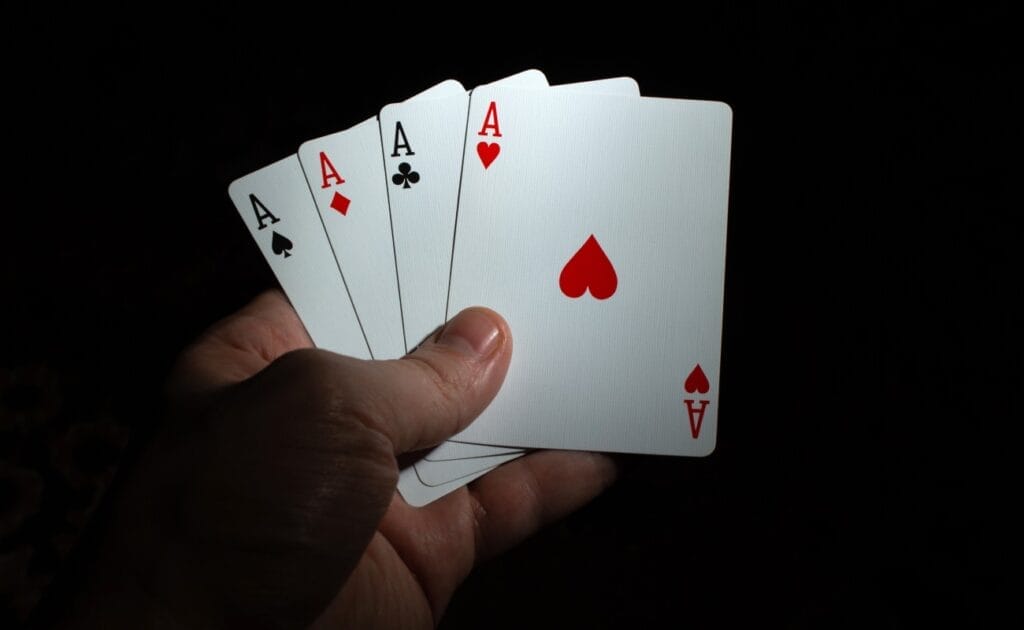
Poker is an intriguing world where strategy and a touch of finesse collide. You may have come across the term “slow playing” in poker. In this article, you’ll learn more about it, why some poker players frown upon it, and when it’s best to play this strategy. Online poker allows players to engage with more players, and you’re bound to come across slow playing sometime or another.
What Is Slow Playing in Poker?

Slow playing in poker is considered a strategic technique where a player deliberately underplays a strong hand and opts to deceptively show weakness to entice opponents to bet more and ultimately extract the maximum value of their hand. By doing this, the player takes a more passive approach and gets other players to believe they have a weaker hand. It allows a player to maximize the pot size and increases the chance of a substantial win when the slow-playing player decides to reveal their strong cards. To apply this strategy effectively, players must adopt smart timing and know their opponents’ poker table habits.
However, the slow play should not be confused with the slow roll, which goes entirely against general poker etiquette. But it would help if you knew more about it, too, so make sure you learn everything there is to know about slow rolling in poker.
Is Slow Playing in Poker Bad?
The art of poker slow play has emerged as a captivating strategy, yet among some players, it’s a source of heated debate. Some players consider it a tremendous tactical maneuver that can lure opponents into costly mistakes, while others believe it tests the boundaries of fair sportsmanship. Critics of this strategy argue that it can be deceptive and blurs the lines between strategic skill and ethical poker gameplay. Slow play provides an air of mystery at the table, adding a layer of excitement to an already tense poker table situation.
The Best Time To Apply the Slow Play Strategy
As mentioned, the key to successful slow play is to disguise the strength of your hand. Your opponents must believe they have a chance of winning, so they will continue betting and increasing the pot. Timing is an essential factor in executing effective slow playing. You will have to choose the right moment to strike and reveal the strength of your hand.
In addition to timing, you must also have a keen understanding of the poker table dynamics, opponents’ playing styles, and the betting patterns of the game. Slow playing typically thrives when opponents are known to be aggressive or too eager to take control of the pot. This strategy works well when the slow-playing player can lure opponents into overcommitting to the pot. If you can master the balance between timing and deception, slow play can become an effective strategy for you.
When To Avoid Slow Play

Of course, with every poker strategy, you shouldn’t play it all the time for maximum effect. Slow playing poker chips do come with their own caution. You should remember to practice restraint when facing opponents who are skilled at reading subtle cues because they may be less prone to falling into the slow-play trap. In situations where opponents are less likely to make aggressive moves, using the slow play tactic can prove to be less effective. Once again, reading the table dynamics is crucial to this strategy. It would be best if you avoided slow playing when there’s a risk of opponents folding to minimal bets, and it outweighs the potential gains.
The Dos and Don’ts of Slow Playing
Knowing the rights and wrongs of a slow playing strategy can help you maximize its potential. It also saves you from carelessly using this strategy. Here are some of the do’s and don’ts when it comes to slow playing.
1. Do Apply Slow Play When You Have Loose or Aggressive Opponents
The slow play strategy works best when facing opponents who play a high percentage of hands and have a habit of betting and raising a postflop. Ultimately, these players frequently “bet the hand for you” and start building a pot. It can be profitable just to call on the flop and then consider raising the turn with your bet.
2. Do Slow Play on Non-Coordinated Boards
In a situation where you have a very “dry” or non-coordinated flop, which presents no immediate flush or straight draws, it would be a favorable time to slow play your hand. This situation would relieve you from the fear of giving a “free card” that might complete some draw for your opponent. If you bet this flop, you’ll discover that you can earn folds and a tiny pot you stood to gain so much more.
3. Don’t Slow Play When Players Fold Often
It’s generally a bad idea to slow play when your opponents tend to fold a lot and play few hands, and when they do play, they’re doing a lot of checking and calling. You cannot count on these opponents to bet themselves. Therefore, you’ll have to do the work of building a pot once you’ve flopped.
4. Don’t Slow Play on “Wet” Coordinated Boards
Consider boards that are “wet” or coordinated because they potentially give your opponents a flush or straight draw as the best time to avoid slow playing the poker table. You don’t want to check these flops and give your opponents a chance at a “free card” on the turn that might complete their draws.
Play Online Poker at Borgata Online
Brush up on your online poker skills right here at Borgata Online. Register today to join in cash games and the best online poker tournaments daily, weekly, or monthly. Play the best Texas hold’em poker online and more online poker variations right here.